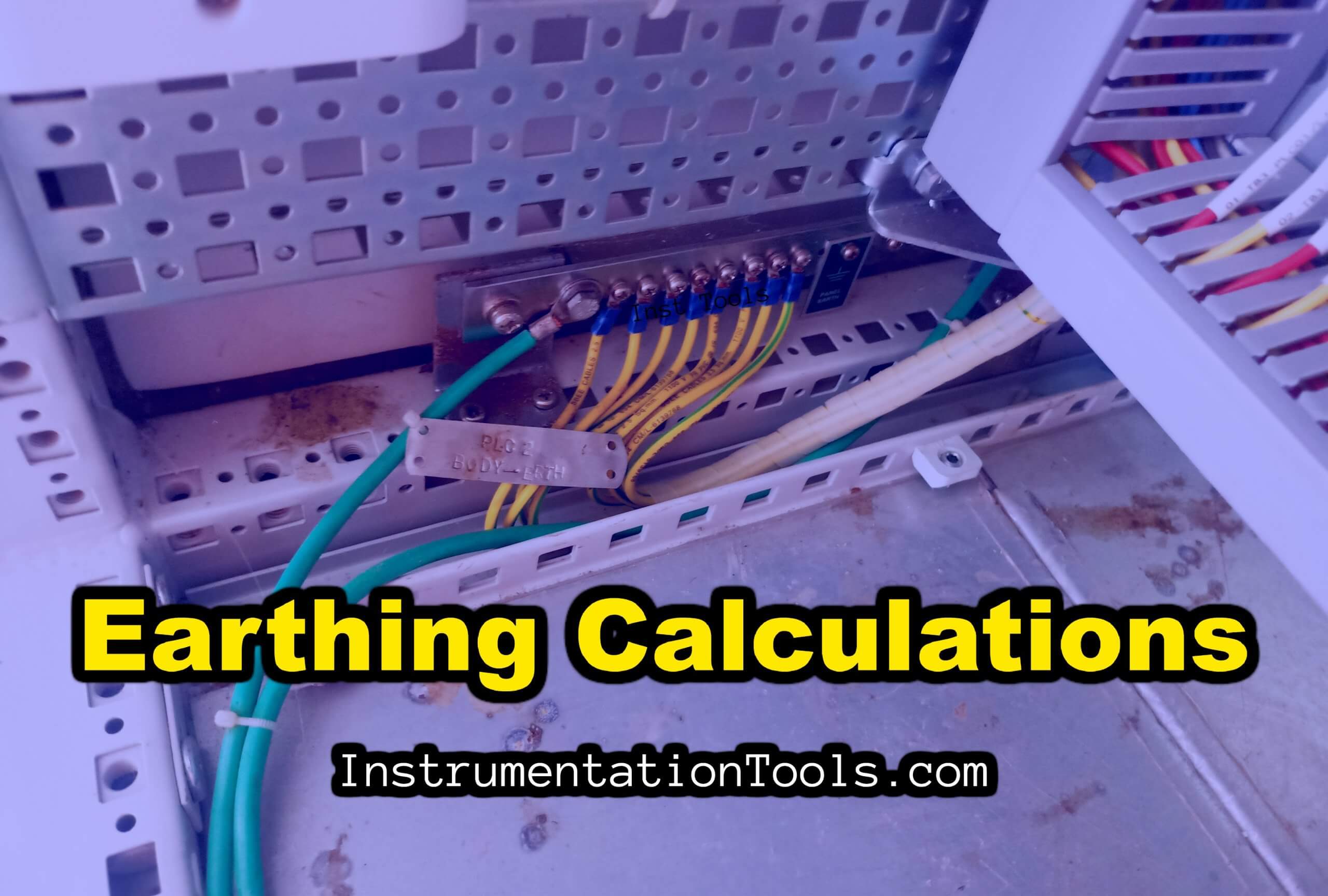In this article, we will discuss how to determine the number of earth pits, the size of the earth grid conductor, and the overall resistance of the earthing system.

Sizing of earth grid conductor shall be done by considering fault current 1 sec. The uniform soil model assumption is based on a 3-meter long pipe electrode used at this installation which cannot penetrate to the second layer of lower soil resistivity.
The material of the earth grid conductor shall be galvanized iron (GI). GI strip shall be considered as the main earth conductor and earth electrodes shall be 80 mm dia pipe meeting the requirements of IS 3043.
The maximum value of a single line to earth fault current is considered as 80 kA. Based on soil resistivity testing at various locations, average soil resistivity 12.46 ohm-m shall be considered for earthing system calculation which is done by wenner’s method.
Electric Resistivity in ohm-m = 2πRS
Where,
S: Distance between two electrodes in meter (m)
R: V/I: Resistance in Ohm Ω
The cross-sectional area of the earth conductor shall be such that the current density value determined by the following formula is not exceeded.
(I/S) = k (1/√ t)
Where;
I = Value of fault current which can flow through the protective device in amperes
S = Cross sectional area in sq.mm.
k = Factor dependent on the material of the protective conductor, the Insulation and other parts, and the initial and final temperatures.
t = Operating time of the disconnecting device in seconds
The factor k is determined from the formula:
k = sqrt [{Qc (B+20) / δ20)} x ln {1+ (θf – θ1) / (B + θ1)}]
Qc = Volumetric heat capacity of conductor material (J/ ºC mm3)
B = Reciprocal of temperature coefficient of Resistivity at 0ºC for the conductor (0ºC)
δ20 = Electrical Resistivity of conductor material at 20ºC (Ω-mm)
θ1 = Initial temperature of conductor (ºC)
θf = Final temperature of conductor (ºC)
For steel conductor;
Qc = 3.8 x 10-3 (J/ ºC mm3)
B = 202 ºC
δ20 = 138 x 10-6 (Ω-mm)
θ1 = 40 ºC
θf = 500 ºC
Put all values as given in equation, so we get,
k = 80.68 ≈ 80
Now, let’s find the cross-sectional area of the earth strip
S = (I x √ t) / k
(80000 x 0.6 x√ 1) /80 [As a total 60% of fault current will flow through the Earth conductor and the remaining 40% will flow through the soil. This is as per BS 7354 ]
S = 600 mm2
Hence S = 600 X 1.15 = 690 sq.mm. (Considering 15 % corrosion margin)
Hence GI Bar of size 36 X 36 sq. mm. size is considered adequate for the main buried earth grid conductor for the plant area.
Ae = (π x D x l) m2
Where,
D = Diameter of electrode (m)
l = Length of electrode (m)
Ae = (π x 0.08 x 3.00) m2 (for 80 mm diameter electrode)
Ae = 0.8294 m2
Number of earth electrodes required to dissipate the fault current of 80kA are
Area of electrodes required to dissipate fault current / Area of each electrode
Number of earth electrodes = 48.49 /0.8294
Number of earth electrodes = 58.46 Nos. (≈ 60 Nos.)
R = (1/2 πl) x [(ρ – ρc) (ln (8L / D) – 1) + ρc (ln (8L / d) – 1)]
Where,
ρ = Resistivity of soil in Ω-m
ρc = Resistivity of infill material in Ω-m
d = Diameter of Electrode in meters
D = Diameter of infill material in meters
L = Driven length of electrode in meters
R = (1/ 2 π x 3) x [ (12.46 – 3) (ln (8×3/0.45)-1) + 3 (ln ((8×3/0.08)-1)]
R = 0.59 Ω
If you liked this article, then please subscribe to our YouTube Channel for Instrumentation, Electrical, PLC, and SCADA video tutorials.
You can also follow us on Facebook and Twitter to receive daily updates.
Read Next:
Rotating equipment packages such as pumps, compressors, turbines need the lube oil consoles for their…
This article explains how to blink lights in ladder logic with a detailed explanation video…
In this article, a simple example will teach you the conversion from Boolean algebra to…
In this article, you will learn the PLC cooking timer example for kitchen automation using…
Learn an example PLC program to control a pump based on level sensors using ladder…
In the PLC timer application for security camera recording, when motion is detected then camera…
View Comments
Great
To calculate no of rods u use area required to dissipate fault current by 48 though it is calculated by 600mm2,how
I WANT SEE THE REPLY